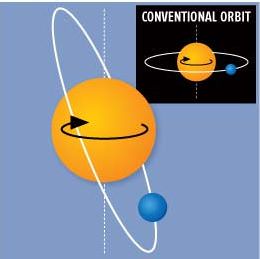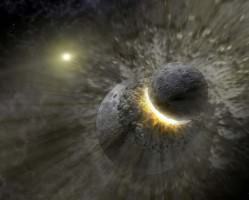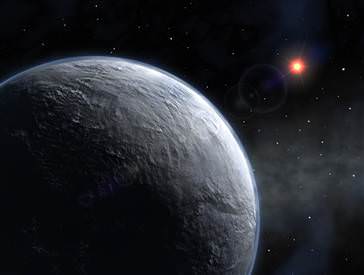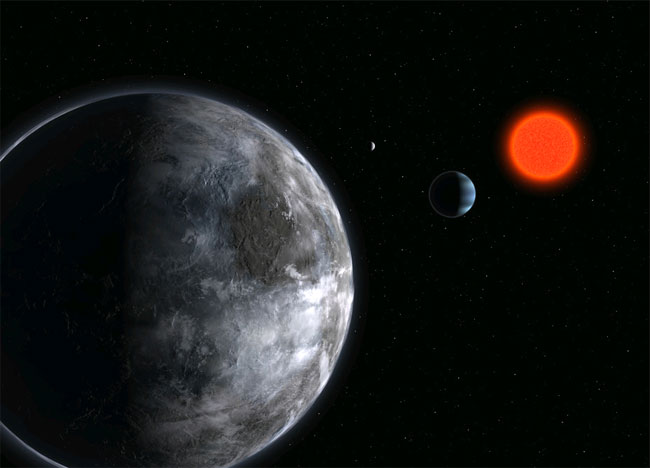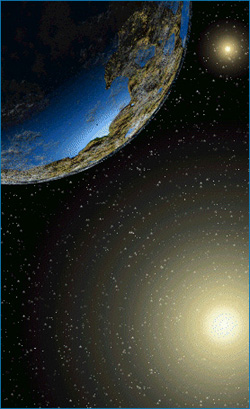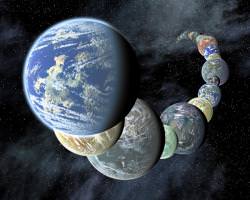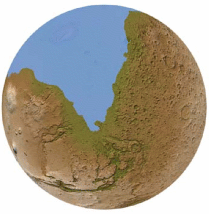[/caption]
While the inner four planets seem large, they are nothing compared to the four outer planets, which are also known as gas giants or Jovian planets. The four giant planets in our Solar System are Jupiter, Saturn, Uranus, and Neptune.
Jupiter is the largest planet in our Solar System, and it truly is a giant planet. Jupiter is so large that you could fit 1321 Earths inside the planet. It is a gas giant, which means that it is comprised almost entirely of gas with a liquid core of heavy metals. Since none of the gas giants has a solid surface, you cannot stand on any of these planets, nor can spacecraft land on them. Another common characteristic of the giant planets is that they all have dozens of moons. In fact, Jupiter has 63 moons that have been discovered so far.
All of the giant planets in our Solar System have rings, but Saturn’s rings are by far the most famous of any. This planet’s ring system is composed of rock, dust, and other particles. The other planetary ring systems are made of similar elements.
Uranus and Neptune are also gas giants, but instead of just helium and hydrogen, they also have significant amounts of ices in their atmospheres. These ices include water, methane, and ammonia. It is the methane in the atmospheres of Uranus and Neptune that give the planets their blue color. Uranus and Neptune are also known as ice giants because of the proportion of ices in their atmospheres.
Giant planets are not limited to our Solar System either. In fact, astronomers have discovered many Jupiter-like planets in other solar systems. For example, in 2007, a group of British astronomers discovered three gas giants that are heavier than Jupiter is. These gas giants are much closer to their star than our Solar System’s gas giants are to the Sun. Scientists think that this may be one reason why these extrasolar planets are heavier, suggesting that only heavier planets can survive closer to a star. Because these planets are so much closer to their sun, they are much hotter than Jupiter and our Solar System’s other gas giants are.
These are just a handful of the gas giants discovered in different solar systems. Astronomers have discovered other extrasolar planets much bigger than Jupiter. Since all of the first extrasolar planets found were gas giants similar to Jupiter, astronomers began to despair of ever finding Earth-like planets that could support life. Recently though, astronomers have discovered different types of extrasolar planets, raising their hopes of finding life on other planets.
Universe Today has a number of articles to check out on gas giants and how big planets get.
You should also take a look at these articles on gas giants and British scientists discover giant planets hotter and heavier than Jupiter.
Astronomy Cast has an episode on extrasolar planets, hot Jupiters, and pulsar planets you should not miss.



